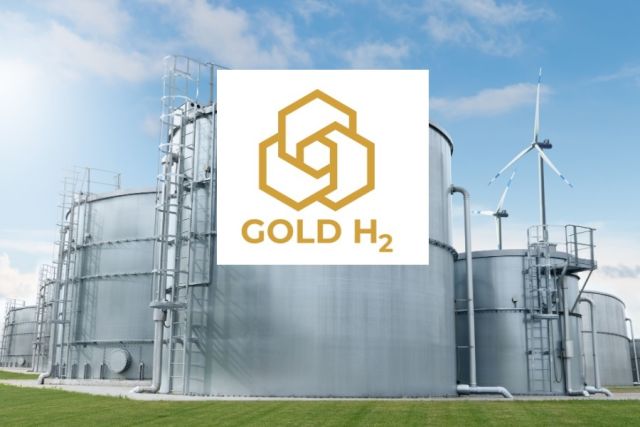
Houston-based Gold H2 has made its technology available to select oil and gas companies for pilot demonstrations. (Source: Shutterstock.com, Gold H2)
Houston-based Gold H2 has signed an agreement with a major oil and gas company to start a series of pilots for its technology that aims to turn depleted oil fields into hydrogen producers.
Gold H2 could not disclose the name of the company but told Hart Energy on July 18 that the agreement is a “non-binding MOU [memorandum of understanding] to work in good faith towards a pilot to begin by Q4 2024.”
The Cemvita spinoff’s technology is being made available to select oil and gas companies for pilot demonstrations. The startup looks to commercialize its technology amid continued focus on reducing greenhouse gas emissions.
Hydrogen is considered an encouraging route toward the effort, given it can substitute fossil fuels for many applications while producing near zero emissions.
So-called gold hydrogen is not as widely produced or pursued compared to other forms of hydrogen made with renewable energy or natural gas. However, that could change as companies such as Gold H2 work to elevate technology on the readiness scale while transforming uneconomical, non-productive oil wells.
“The availability of our Gold Hydrogen technology today tremendously accelerates momentum in the hydrogen space,” said Alicia Dinges, head of business development at Gold H2. “Unlike other producers, Gold H2 uses Earth’s natural resources to produce the lowest cost, cleanest hydrogen fuel.”
Gold H2’s technology utilizes microbes as part of a biotech process that transforms residual oil into hydrogen using a waterflooding-type application with injectors and producers.
Targeted reservoirs are those with the capacity to be waterflooded with temperatures between 130 F and 180 F and total dissolved solids concentration of less than 100,000 ppm, Gold H2 said.
In addition to the waterflood injection system, Gold H2 deploys an onsite fermentation unit to inject its microbes and nutrients to begin the production process. The company said each unit is capable of converting up to 120 oil wells, which could each produce up to 2.5 tons of hydrogen per day.
Besides the recently signed agreement with the oil and gas company, Gold H2 has numerous projects—including outside of the U.S.—in the pipeline, according to Dinges. The company said it is in ongoing discussions with industry players in Canada, India, Eastern Europe, Latin America and the Middle East.
In an interview with Hart Energy in June, Gold H2 CEO Prab Sekhon said the company seeks to commercialize the technology within 12 months to 24 months.
“Our target is to hit as many reservoirs as we can,” he said.
Gold H2 is targeting old oil fields with existing infrastructure that can be retrofitted.
“You’re harnessing the Earth’s heat for any thermal needs of these bugs [microbes] to essentially eat oil, digest and create hydrogen,” Sekhon said. “What we’re able to do is create an extremely low carbon intensity—close to green—hydrogen. And we’re able to produce it at 80 cents a kilogram. That’s the target.”
Recommended Reading
Entergy, KMI Agree to Supply Golden Pass LNG with NatGas
2025-02-12 - Gas utility company Entergy will tie into Kinder Morgan’s Trident pipeline project to supply LNG terminal Golden Pass LNG.
Trinity Gas Storage Adds Texas Greenfield Gas Storage Complex
2025-01-20 - Trinity Gas Storage has opened a 24-Bcf gas storage facility in Anderson County, Texas, to support the state’s power grid.
Howard Energy Clinches Deal for EPIC's Ethylene Pipeline
2025-01-09 - Howard Energy Partners’ purchase of EPIC Midstream Holdings ethylene pipeline comes days after EPIC agreed to sell midstream NGL assets to Phillips 66 for $2.2 billion.
ONEOK, Enterprise Renew Agreements with Houston’s Intercontinental Exchange
2025-01-29 - ONEOK and Enterprise Product Partners chose to continue their agreements to transfer and price crude oil with Houston-based Intercontinental Exchange.
Overbuilt Fleet of LNG Tankers Sinking Cargo Transport Rates
2025-01-30 - LNG shipping rates are at historic lows as a flooded transport market waits for projects to come online and more cargoes to move.
Comments
Add new comment
This conversation is moderated according to Hart Energy community rules. Please read the rules before joining the discussion. If you’re experiencing any technical problems, please contact our customer care team.






